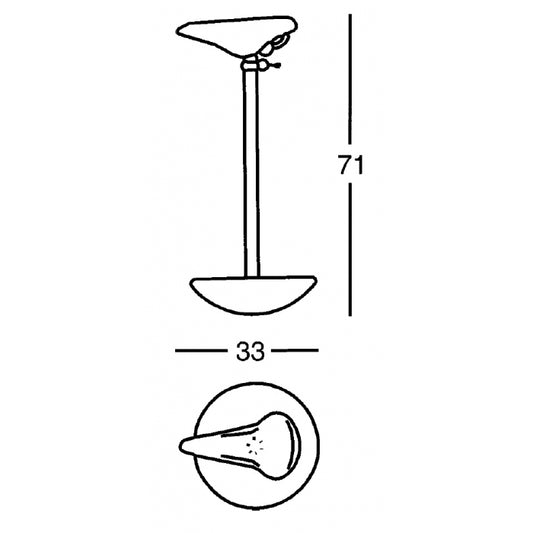Collection: Pier Giacomo Castiglioni
Architect, designer and academic Pier Giacomo Castiglioni (Milan, 1913 - 1968) is one of the most emblematic figures in Italian and international art and design. In 1936, while still an architecture student at the Milan Polytechnic, he founded his first studio in Corso di Porta Nuova with his older brother Livio, also an architect, and fellow student Luigi Caccia Dominioni. After graduating the following year, he immediately began his academic career as a teaching assistant in the Architectural Design course, for which he was assigned a lectureship in 1958.
Livio's great passion for radios led to the studio's collaboration with Phonola, for whom the three architects designed the 547 radio receiver. Presented at the 7th Milan Triennale in 1940 and awarded a gold medal, it revolutionised the design of radio receivers, which until then had been housed in wood cabinets. The bakelite body resembled the typewriters and telephones of the era, revealing a creative design approach that was to underpin Pier Giacomo's work, which tends towards the simplification of forms and solutions that combine decontextualised objects - so-called ready-mades. In 1938, the office designed the Caccia cutlery set for Alessi (1938), still in the brand's catalogue today. Praised by Gio Ponti for its innovative design, it is now on display in the MoMA permanent collection in New York. The outbreak of World War II marked a pause in the studio's activity; it reopened in 1944, with the entry of their younger brother Achille, fresh out of architecture school, and the departure of Caccia Dominioni. The three brothers worked together until 1952 when Livio decided to open his own office.
Pier Giacomo and Achille worked on various fronts from architecture to the design of trade fair pavilions and exhibitions, from the restoration of historic buildings to industrial design, developing their activity in perfect symbiosis, signing all their creations together. Among the most notable events in their fortunate careers are the exhibitions, Forme e colori nella casa d'oggi at Villa Olmo, Como (1957) and La casa abitata a Firenze (1965), where the two brothers presented objects marking design history, among which: the Cubo armchair, now in the Meritalia collection (Arflex); the Mezzadro and Sella stools (Zanotta); the Luminator lamp (Flos) awarded the Compasso d'Oro in 1955; the Tric folding chair and the Firenze clock for Alessi. In 1956 he became a founder of the ADI (Associazione per il Disegno Industriale) and the Compasso d'Oro award, which he won on several occasions - in 1960 for the T12 chair (Palini); in 1962 for the Pitagora coffee machine (Cimbali); for the Spinamatic beer tap (Poretti) in 1964; and for the headset for simultaneous translations for Phoebus Alter in 1967. Thanks to their long-standing friendship with Flos founder, Dino Gavina, the two brothers designed such legendary lamps as Arco, Toio, Tubino, Saliscendi, Snoopy and Splügen Bräu. The latter, together with a set of glasses and cutlery, furniture and tapware, is part of the sophisticated design of the Splügen Bräu Brewery in Corso Europa, now demolished, considered the first example of a public design venue. The two brothers worked together until Pier Giacomo's untimely death in 1968.












